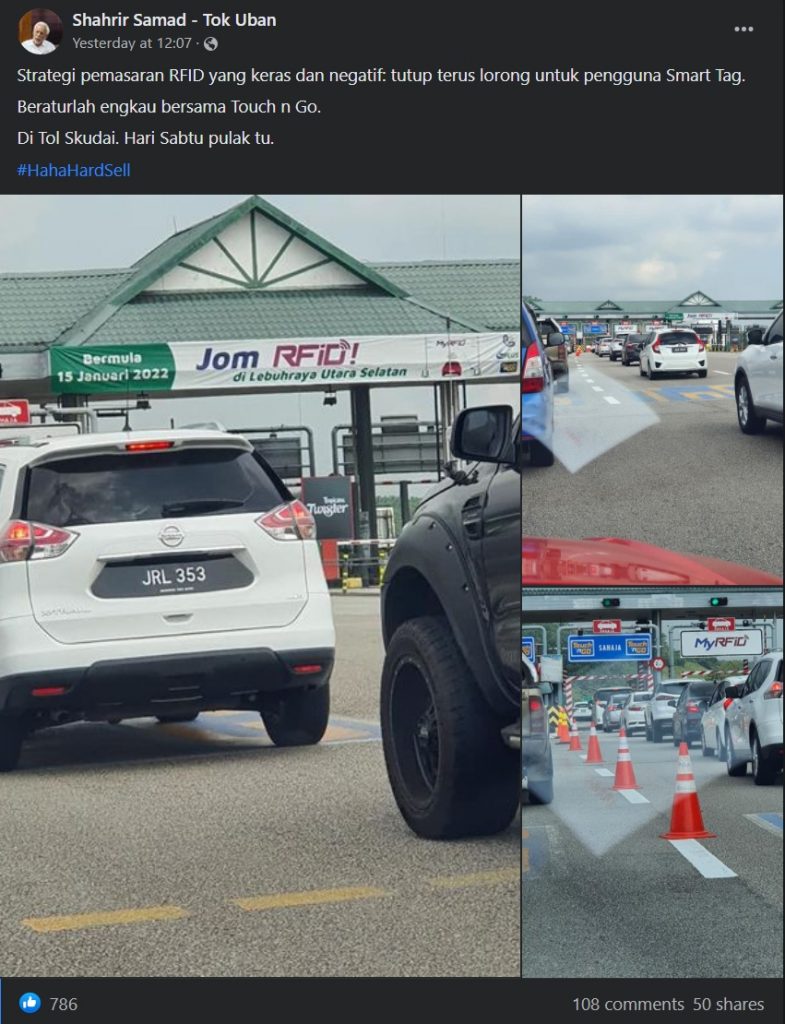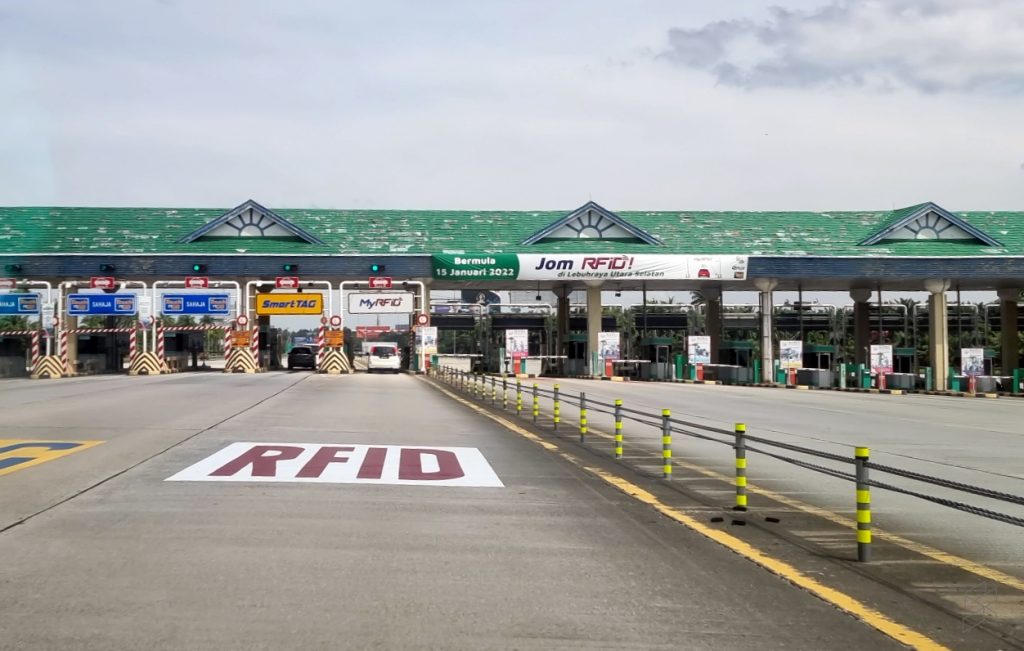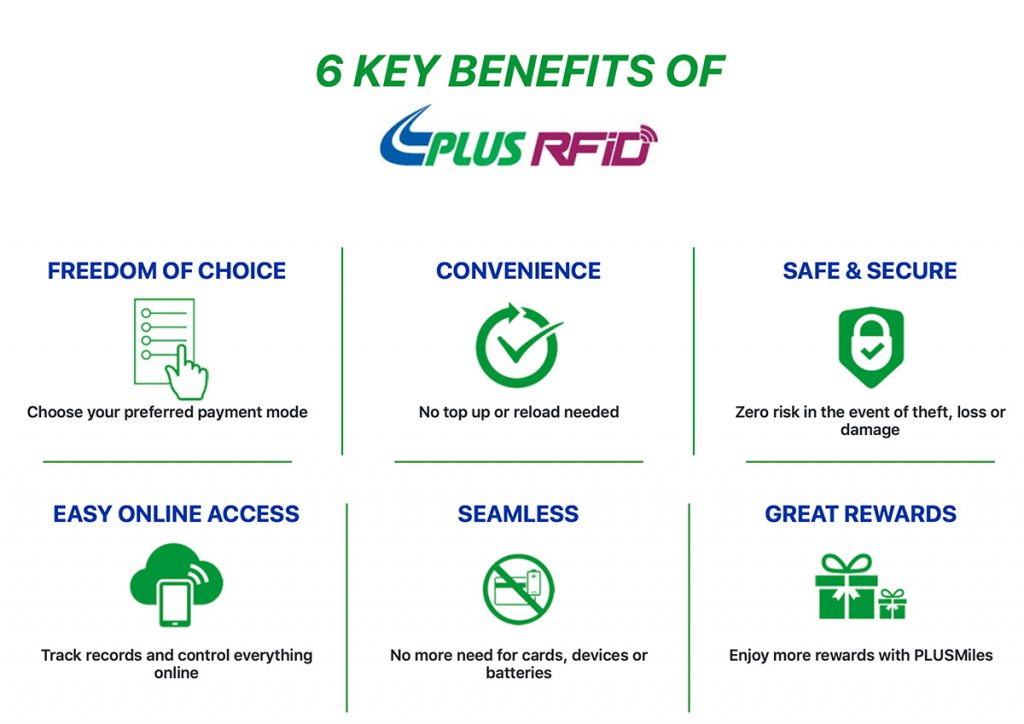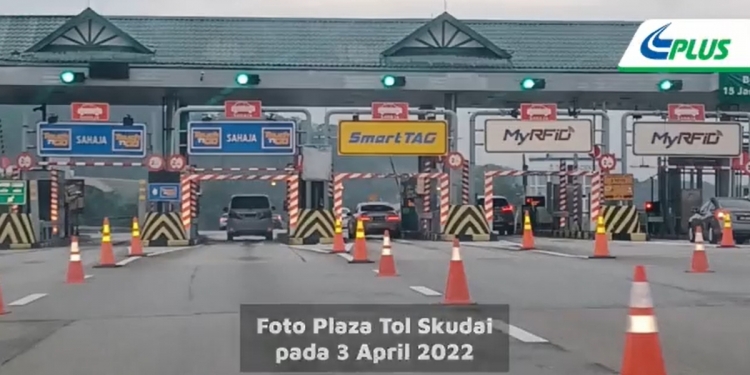The North-South Expressway is expected to be busier than usual following the full reopening of land borders between Malaysia and Singapore. Yesterday, a social post on Shahrir Samad – Tok Uban Facebook page claims there was no SmartTAG lane at Skudai Toll Plaza yesterday with vehicles forming long lines at slower Touch ‘n Go lanes. The post described the closure of SmartTAG lanes as a bad RFID marketing strategy.

PLUS, the highway concessionaire in charge of the North-South Expressway has posted on Facebook and Twitter to deny the allegations. It clarified that the photos were outdated and have debunked the claims by showing current photos of Skudai Toll Plaza which has at least one SmartTAG lane between RFID and Touch ‘n Go lanes.
PLUS Malaysia Berhad ingin merujuk kepada satu 'posting' di media sosial yg mempamerkan gambar Plaza Tol Skudai yang kelihatan hanya beroperasi dengan lorong Touch 'n Go dan RFID sahaja tanpa lorong SmartTAG#PLUS_Comfort#PLUS_Safety#PLUS_RFID@MOWorks @LLMrasmi @plustrafik pic.twitter.com/knetp24A7V
— PLUS Malaysia Berhad (@plus2u) April 3, 2022
The photos of the toll plaza without SmartTAG lanes were taken in January 2022 after the initial mass rollout of RFID. At that time, PLUS had converted several SmartTAG lanes into RFID which has caused congestion and frustration for highway users. Following the complaints, PLUS had apologised and subsequently reinstate a total of 43 SmartTAG lanes at 34 toll plazas.
Tol skudai jem teruk. Lemah badan gini oiii 😂 pic.twitter.com/BqCYHrWM0E
— Fau (@fau_hamin) March 12, 2022
Some social posts dated sometime in March 2022 have also verified that SmartTAG lanes were indeed reinstated at Skudai Toll plaza. From what we understand, all toll plazas from Juru in Penang to Skudai in Johor will have at least one SmartTAG lane available. Users will have a total of 3 ways to pay – Touch ‘n Go card, SmartTAG and RFID. Do note that PLUS does not support PayDirect. As usual, if you’re entering the highway via RFID, you should also exit via RFID to avoid any surprise charges. Highway users are also advised to have sufficient balance before starting their journey.
As announced by Works Minister Fadillah Yusof, Malaysia aims to implement Multi-Lane Free Flow (MLFF) for toll highways in 2025 with RFID. MLFF is a barrier-free tolling system where vehicles can travel freely without the need to slow down for dedicated lanes or barriers. Vehicles will be charged via RFID coupled with Automated Number Plate Recognition (ANPR). The Minister also added that the public will be given the freedom to use any digital mode of payment which include eWallets, debit or credit card. This would supposedly end Touch ‘n Go’s monopoly on highway toll payments.

When PLUS announced its support for TNG RFID, there was supposed to be an open payment system that allows users to link their RFID tag to other cashless payment options. This open payment system was announced back in November 2019 when the current Finance Minister Tengku Zafrul was the Group CEO of CIMB Group.

In case you missed it, PLUS had initially introduced its own PLUS RFID system in late 2018 which allows users to link the tag directly with their debit and credit card. Shortly after that, Touch ‘n Go’s parent company, CIMB Group, had threatened legal action against the highway concessionaire alleging that PLUS’ RFID pilot was a breach of a joint venture agreement. Eventually, the dispute was settled and PLUS eventually adopted TNG’s RFID solution which currently only accepts Touch ‘n Go eWallet.








